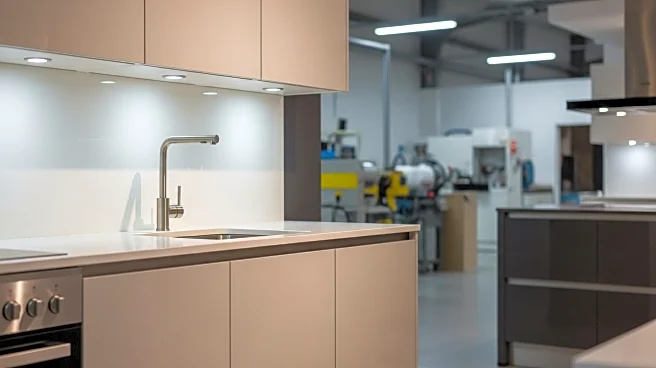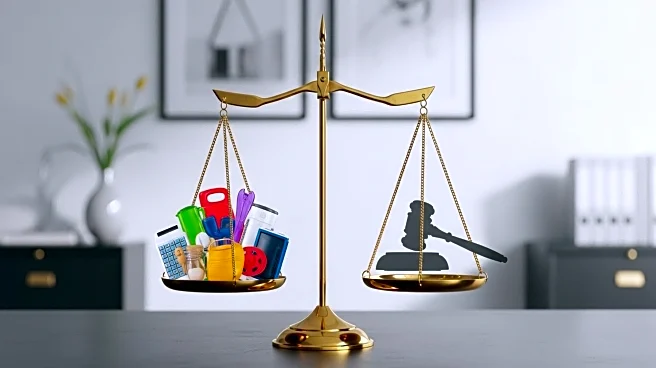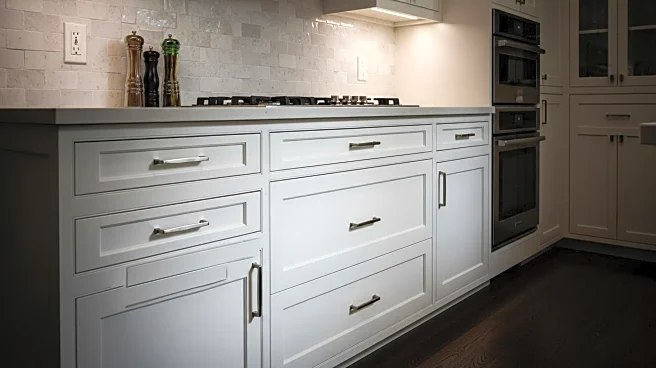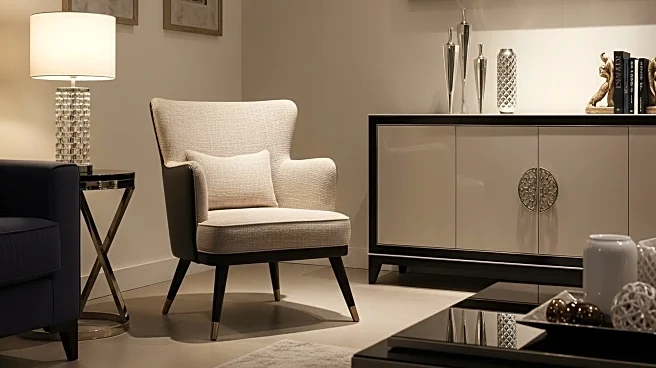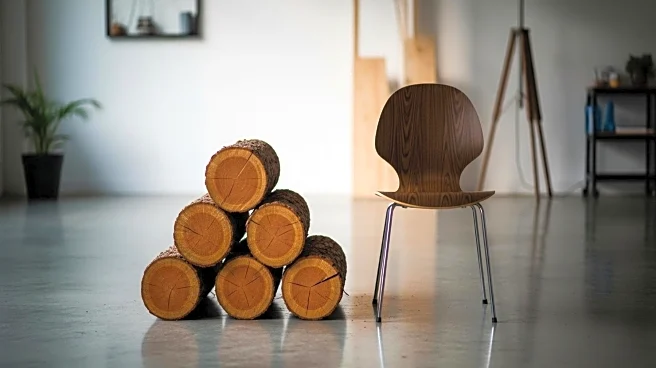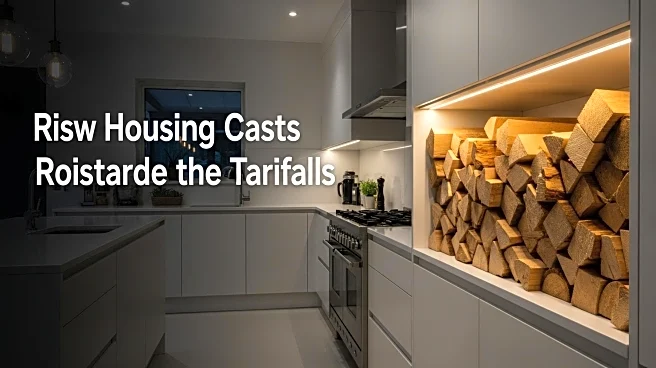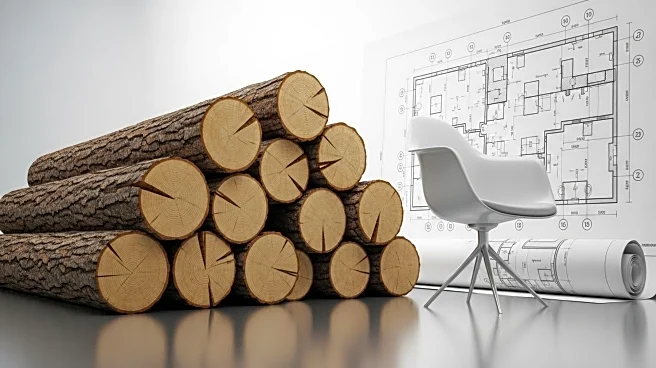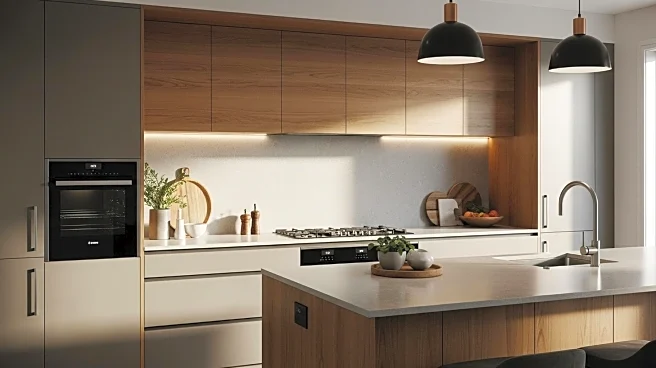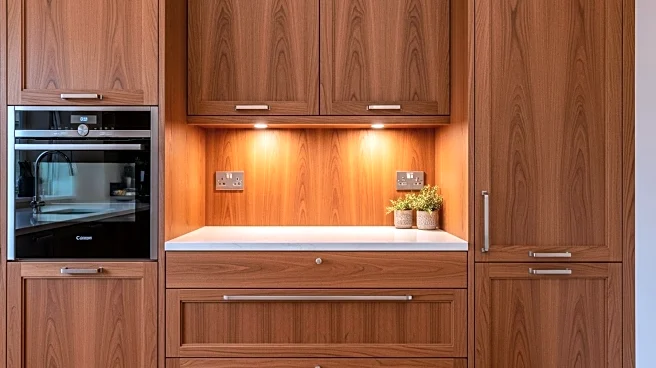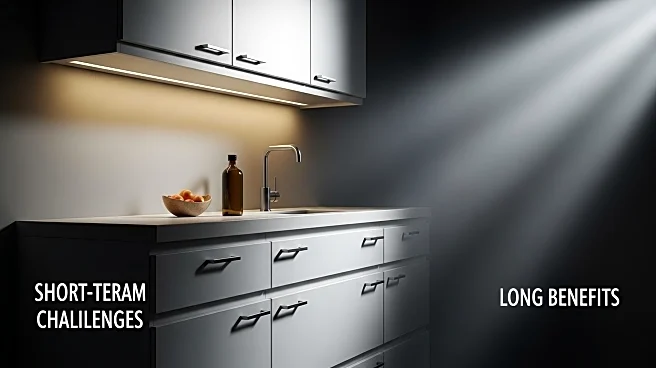What is the story about?
What's Happening?
President Trump has announced new tariffs on imported kitchen cabinets, bathroom vanities, and upholstered wooden furniture, effective immediately. The tariffs are set at 25% for the remainder of the year and will increase to 50% starting January 1. These measures are part of a broader strategy to address national security concerns and foreign trade practices. The tariffs aim to boost domestic production by making imported goods more expensive, thereby encouraging consumers to purchase U.S.-made products. However, industry stakeholders, including cabinet dealers and interior designers, express concerns about potential short-term disruptions. They fear that clients may delay renovations due to increased costs, impacting the remodeling industry. Despite these challenges, some businesses are optimistic about the potential for increased demand for domestic products.
Why It's Important?
The imposition of tariffs on kitchen cabinets and related products is significant for the U.S. home improvement industry. It could lead to increased demand for domestically produced goods, potentially benefiting U.S. manufacturers. However, the tariffs may also result in higher costs for consumers, affecting their willingness to invest in home renovations. This could lead to a slowdown in the remodeling sector, which has been a steady contributor to the economy despite high mortgage rates. The tariffs also highlight ongoing trade tensions and the U.S. government's focus on protecting domestic industries from foreign competition. Businesses that rely on imported materials may face challenges in maintaining their supply chains, potentially leading to reduced product variety and increased costs.
What's Next?
As the tariffs take effect, businesses in the kitchen cabinet industry will need to adapt to the new economic landscape. Companies that rely on imported materials may need to explore alternative sources or adjust their pricing strategies to remain competitive. The industry may see a shift towards more domestic production, but this transition could be slow due to existing supply chain dependencies. Stakeholders will likely monitor consumer reactions and adjust their business models accordingly. The tariffs could also prompt discussions among policymakers and industry leaders about the long-term implications for trade and domestic manufacturing.
Beyond the Headlines
The tariffs on kitchen cabinets and related products may have broader implications for U.S. trade policy and international relations. They reflect a growing trend of protectionism and could influence future trade negotiations. Additionally, the focus on national security as a justification for tariffs raises questions about the intersection of economic policy and security concerns. The impact on consumer behavior and industry dynamics could lead to shifts in market strategies and innovation within the home improvement sector.
AI Generated Content
Do you find this article useful?
